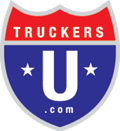by Timothy D. Brady
As anyone who goes into business discovers, there are no guarantees when it comes to making money as an entrepreneur. It’s a learning process with each business. Learn from each business the skills that can be applied to the next one. Each enterprise develops a life pattern of its own. This is equally true in trucking. The toughest lesson to learn is that it takes time to grow a business. And even longer to where it’s generating the revenue needed to make a sustainable profit. This isn’t measured in months but in years.
Several things over time need to happen before a business can be successful.
Build your reputation.
You must establish that you know what you’re doing, to the public and to your customers. This is known as reputation building or trust. Without it, the business is dead in the water. And similar to any relationship, trust takes time to establish.
You must set your rates
The prices or rates the business charges for its products and services must exceed the costs necessary to provide them. This must include enough profit that provides sustainability and the capability to grow. Too many new businesses, especially micro-trucking companies, take too many shortcuts. Example: letting customers (read that shippers and brokers) set their rates and hence, their revenue. They haven’t a clue on how to determine their rate range; they’re depending on the customer to determine it. There is no way a customer can know your costs or what you’ll need to sustain and grow. And without this information, it’s impossible for the customer to know the revenue you need.
Don’t let the customer set your rate
The customer is looking to pay the lowest price possible. However, negotiating with a carrier these customers don’t know what it costs the carrier to provide the service they’re requesting. If the carrier doesn’t know their costs and profit requirements. Thus relying on “what others are charging,” the carrier will be left with the short end of the revenue stick. Also known as ‘cheap freight.’
Another area where many new carriers fail. They’re under the misguided notion they need to set a rate per mile and stick to that rate. That’s a mistake. Why? The answer is a mathematical fact: the fewer miles a truck travels, the higher its cost per mile. This is because of the fixed cost factor. The cost per mile of a semi-truck ranges from $1.40 per mile to $500 per mile in a single day. It all depends on whether it runs one mile or 600 miles in a day. Add a day of sitting, your cost per mile for 600 miles increases by 50 cents per mile or an additional $500 for that single mile.
Understand your market
Know your market and its trends. Many micro-carriers take the highest-paying freight out of an area, without knowing the outbound rates where they’re headed. In-trucking, it’s all about consistency in freight. Knowing the ups and downs of rates of the different legs within your freight lane. It’s what you gross at the end of the month, not just trying to maximize the revenue per mile on each load.
Instead, have a lane where the revenue meets a predetermined dollar goal at the end of each month. Look at the entire revenue over a full lane. Include the time required and the miles necessary to cover all the loads. Then determine the total revenue necessary to make the profit required. This is a much more efficient method of insuring your operation pays its bills. Plus has the profits to sustain itself and grow
Try not. Do! Or do not! There is no try!
As Yoda so eloquently put it in Star Wars, when instructing Luke Skywalker: “If no mistake have you made, yet losing you are … a different game you should play. No! Try not. Do, or do not. There is no try.” The effort, knowledge and, skill you put into your operation is directly relative to what you’ll get out of it. However, if you only put out effort and skill but no knowledge. Or knowledge, and skill without effort, you won’t receive the results you desire. All three are required for success … So stop trying, and do by developing a life pattern of your own.
Timothy D. Brady © 2020
The Introduction to Trucking Business
This is a quick and simple means of getting your small motor carrier on track. “This is NOT a beginners’ course, but a course on how to operate your trucking company successfully.
Click on the button below to register for the course
Click Here for Course Information.

